Hosted by the Freshwater Biological Association, the Riverfly Partnership represents a network of organisations whose aims are to protect the water quality of our rivers, further the understanding of riverfly populations and actively conserve riverfly habitats. This is achieved via a range of ongoing projects which utilise citizen scientists to monitor invertebrates, water chemistry, physical habitat, pollution and hydromorphological functioning in order to gain a picture of overall river health.
 Ben Fitch is the national project manager for the Anglers’ Riverfly Monitoring Initiative, one of the projects run by the Riverfly Partnership. This week we chatted to him about the Partnership and their projects, the importance of riverflies and how Covid-19 has affected his working life over the recent months.
Ben Fitch is the national project manager for the Anglers’ Riverfly Monitoring Initiative, one of the projects run by the Riverfly Partnership. This week we chatted to him about the Partnership and their projects, the importance of riverflies and how Covid-19 has affected his working life over the recent months.
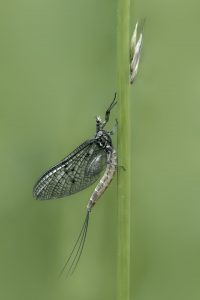
If one were to canvas general public opinion about flies, many people would likely think of those which they consider to be pests, such as house flies, mosquitos, greenfly, blackfly and horseflies. How would you explain to a non-specialist how important riverflies are and why we should care about them?
First of all, I would say that all insects are essential to life on this planet, with species fulfilling important roles within ecosystems – even those ‘pesky’ flies as some may see them.
Next, I would highlight the fact that freshwater is a precious natural resource upon which all life on Earth depends. Humans are certainly no exception to that rule, but it is because of us that freshwater is under considerable and continuous threat.
I would go on to explain that riverflies contain three groups of insects, namely mayflies, caddisflies, and stoneflies. More than 280 species of riverflies have been recorded in the UK, most of which spend the greater part of their life beneath the surface of still or running freshwater as larvae, before emerging from the water as winged adults. Riverflies should be present in running and still freshwater bodies across the UK throughout the year, they are at the heart of freshwater ecosystems and are a vital link in the aquatic food chain as a food source for fish and birds.
Importantly, riverflies are sensitive to changes in water quality, for example chemical or organic pollution, which makes them excellent indicators of the health of a freshwater body (they are often referred to as the canaries of our rivers). Thus, by monitoring them regularly, it is possible to identify and manage pollution issues, deter would-be polluters, and protect our freshwater ecosystems.
Does Britain have any endemic or particularly rare riverflies?
There are eight rare and threatened riverfly species that have been designated as conservation priorities by the UK Government. The eight species, listed as follows, are categorised as being of Principal Importance:
Northern February red (Brachyptera putata): a stonefly that occurs only in Britain. It is found mainly in Scottish upland streams.
Rare medium stonefly (Isogenus nubecula): only known to occur in the Welsh River Dee and may now be extinct.
Scarce grey flag (Hydropsyche bulgaromanorum): a large caddisfly only known from stony areas on the River Arun in Sussex.
Scarce brown sedge (Ironoquia dubia): a caddisfly only known from three southern English sites. There are no recent records for this species.
Small grey sedge (Glossosoma intermedium) a caddisfly that has been found in only four Lake District streams. There are no recent records for this species.
Window-winged sedge (Hagenella clathrata) an orange mottled caddisfly that lives in pools on bogs and heathland at about ten sites in the UK.
Southern iron blue (Baetis niger): a widespread mayfly species whose abundance appears to have declined in some areas by as much as 80% in recent decades.
Yellow mayfly (Potamanthus luteus): an attractive, bright yellow mayfly that is found mainly on the River Wye in the Welsh borders.
[I would like to give great thanks to Craig Macadam, Conservation Director at Buglife – The Invertebrate Conservation Trust, for permitting me to use information from the Buglife website in parts of this interview, particularly above. To find out more about why bugs are essential to our planet and all life on it, visit: https://www.buglife.org.uk].
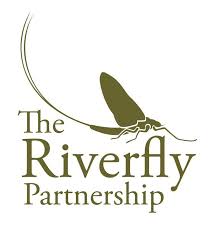 The Riverfly Partnership coordinates a number of projects looking at lots of different measurements of river health. These include surveying invertebrates, physical habitat, hydromorphological features and pollution events. What happens to the data that is collected in these projects? Who uses it and what for?
The Riverfly Partnership coordinates a number of projects looking at lots of different measurements of river health. These include surveying invertebrates, physical habitat, hydromorphological features and pollution events. What happens to the data that is collected in these projects? Who uses it and what for?
Firstly, I should clarify that the Riverfly Partnership (RP) is hosted by the Freshwater Biological Association and is a network of more than 100 partner organisations representing anglers, conservationists, entomologists, scientists, water course managers, and relevant authorities. RP carries out work according to its core aims: to protect the water quality of our rivers, to further the understanding of riverfly populations, and to conserve riverfly habitats.
As your question states, RP is involved in a number of citizen science freshwater monitoring initiatives. Here is a summary of those initiatives along with how data is collected, stored, and used in each case:
Anglers’ Riverfly Monitoring Initiative (ARMI)
The Anglers’ Riverfly Monitoring Initiative (ARMI) is a project that enables trained volunteers, such as anglers and conservationists, to protect river water quality by regularly monitoring eight pollution sensitive aquatic invertebrate groups. Data is recorded in the field before being uploaded to the national online ARMI database (once checked and verified, ARMI data is available under the terms of the Open Government Licence). ARMI complements the work carried out by statutory agency staff across the UK, such as the Environment Agency in England, primarily by reporting pollution incidents to and sharing ARMI data with those agencies directly.
Urban Riverfly
Urban Riverfly includes an additional six aquatic invertebrate groups to the eight used in the original ARMI scheme and can be used across a number of different river systems, but especially modified rivers and those influenced by conurbations. Urban Riverfly data is recorded in the field by trained citizen scientists, hosted locally through Riverfly Hubs, and used by Catchment Partnerships to inform catchment management and direct conservation action.
Extended Riverfly
Extended Riverfly uses 33 invertebrate groups, including the eight ARMI groups, to provide a more nuanced picture of river water quality according to different stressors. Extended Riverfly data is collected, stored, and used similarly to that of Urban Riverfly.
Freshwater Watch
Hosted by the Earthwatch Institute, Freshwater Watch is a global initiative for monitoring water quality and water chemistry. Data is recorded in the field and submitted online by trained citizen scientists, after which experts provide analysis and feedback to monitors and present evidence to decision- and policy-makers worldwide.
MoRPh
The Modular River Survey, or MoRPh, enables citizen scientists and professionals to be trained to assess and record physical habitat and hydromorphological functioning in their local rivers and streams. Data is hosted online by Cartographer and is used by Catchment Partnerships to inform catchment management and direct conservation action.
Outfall Safari
The Outfall Safari is a citizen science method devised to systematically survey outfalls in urban rivers in order to identify pollution and notify the relevant authorities (sharing data accordingly). It was created by the Citizen Crane project team in partnership with staff from Thames Water and the Environment Agency, and is regarded by the Environment Agency as best practice.
SmartRivers
SmartRivers, hosted by Salmon & Trout Conservation (S&TC), takes citizen science invertebrate monitoring to the highest resolution. Species data are recorded in the field then stored in S&TC’s database. S&TC staff process SmartRivers data through their unique calculator and provide data analysis that identifies specific water quality stressors in the river and pinpoints where they are occurring. S&TC use SmartRivers data to provide evidence that can help prevent pollution occurring in the first place. This evidence can also inform how to concentrate management efforts locally to achieve the best environmental outcomes.
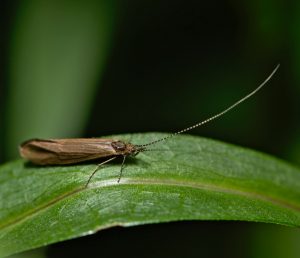
Like many people across the UK, you have been furloughed as a result of the global Covid-19 coronavirus pandemic since March 2020, so are not legally permitted to work. As such, we are grateful to you for agreeing to do this interview in a voluntary capacity. Can you describe your role within the Riverfly Partnership and what a typical work day looks like for you?
My working role for the Riverfly Partnership is as the national project manager of the Anglers’ Riverfly Monitoring Initiative (ARMI). The Riverfly Partnership receives funding support for the role from the Environment Agency (rod licence revenue and the Water Environment Improvement Fund). I have also been a committed and active ARMI volunteer monitor since 2009.
At the moment, I would not describe my days as ‘typical’ for the reasons outlined in your question. I have not been able to work since late March, neither has it been possible to carry out ARMI sampling for the larger part of the same period. I am grateful, however, for the excellent ongoing support provided by the Freshwater Biological Association and I hope to be able to return to work in the near future, as soon as government advice permits and once it is deemed safe for me to do so. In the meantime, I have greatly enjoyed spending more time with my family which has largely centred around home educating our two children whilst my wife, as a key worker, has continued to work throughout.
A typical day prior to the current situation was always incredibly busy! My key responsibilities revolve around supporting and expand the ARMI network, including communications, publications, presentations, training delivery, tutor support, tutor/training workshop observations and QA, tutor development, database and website management, and much, much more. I wouldn’t feel right at this point if I didn’t thank every single ARMI volunteer, participant, partner, and supporter for their incredible commitment towards protecting our rivers. I would also like to acknowledge my colleagues Alex Domenge, Steve Brooks, Bill Brierley, Roger Handford, Lesley Hadwin, Kirsty Hadwin, Paul Knight, Nick Measham, Tom Miles, along with every RP Board member, every Extended / Urban Riverfly Working Group member, and every contact at the Environment Agency, Scottish Environment Protection Agency, Natural Resources Wales, and Northern Ireland Environment Agency. As you can see the work that I am involved in has partnership at its core.
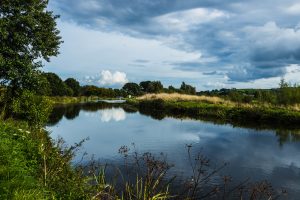
If people want to get involved with riverfly monitoring (or any of your citizen science projects) how would you suggest they get started? Do they need prior knowledge/experience of freshwater sampling or species ID?
Volunteering, as a river monitor or riverfly recorder, is not only an excellent way to protect the health of your local river, but also to contribute towards direct conservation action, local communities, scientific data and evidence, and sustainability.
New volunteers are always welcome and no prior knowledge or experience is necessary.
Individuals interested in becoming a volunteer Riverfly monitor should register their interest with their local Riverfly hub coordinator. To find out who that is please use the contact us page on the Riverfly Partnership website: https://www.riverflies.org
Individuals interested in becoming a riverfly recorder should visit the Riverfly Recording Schemes (RRS) page of the Riverfly Partnership website: https://www.riverflies.org/Recording_Schemes where details about the schemes and RRS coordinator contact information can be found.
Organisations interested in joining the Anglers’ Riverfly Monitoring Initiative (ARMI) must have a member who is prepared to act as a local coordinator (to serve as a contact point between the EA / SEPA / NRW / NIEA and the monitoring group) and have members attend an official ARMI workshop. The workshop includes presentations, practical demonstrations and active participation. For more information please contact us via the Riverfly Partnership website: https://www.riverflies.org
For information about freshwater invertebrate and freshwater ecology training courses, I can highly recommend the Freshwater Biological Association: https://www.fba.org.uk
What conservation actions or changes would you like to see happen in your lifetime that would have a significant (and positive) impact on river health and biodiversity?
I could list many here but I am going to go with two, off the bat:
- Serious, long term political commitment to the natural world and conservation thereof
- Wilding
If you had to tell people to google a photo of one species of riverfly which would you choose? (perhaps because it is ecologically important or just because it looks interesting!)
If I had to choose one, it would be of a flat-bodied mayfly larva (species Ecdyonurus dispar – Autumn Dun) because new volunteers often remark that it looks like an alien! If that stirs your curiosity, type ‘Ecdyonurus dispar’ in to your internet search engine of choice. If you can find an image of the white spot variant that is particularly striking.
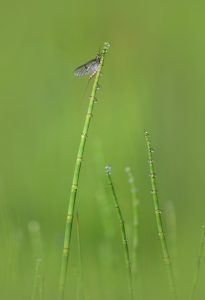 I would also like to share this beautiful image, simply named ‘Mayfly’, photographed by Jon Hawkins. This was the winning entry to the most recent RP Photography Competition and I think it deserves to be seen! (Reproduced with kind permission of the Riverfly Partnership, copyright Jon Hawkins.)
I would also like to share this beautiful image, simply named ‘Mayfly’, photographed by Jon Hawkins. This was the winning entry to the most recent RP Photography Competition and I think it deserves to be seen! (Reproduced with kind permission of the Riverfly Partnership, copyright Jon Hawkins.)
Image credits:
(a) Mayfly by Johan J.Ingles-Le Nobel via Flickr (CC BY-ND 2.0)
(b) Caddisfly by Magnus Hagdorn via Flickr (CC BY-SA 2.0)
(c) River Exe by Adrian Scottow via Flickr (CC BY-SA 2.0)

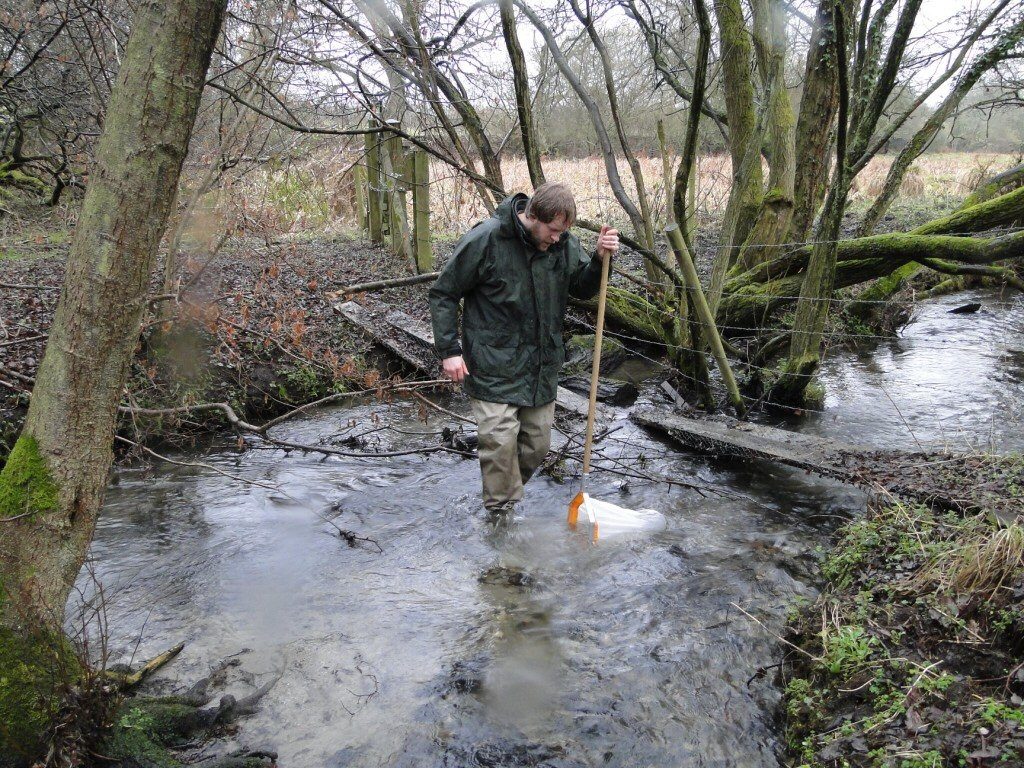
An intersting article which provides a lot of background to ARMI . We have been trained to monitor riverfly on the River Cerne in Dorset and three of us handle the monthly returns for the reports. Good to know more about the importance of our work.
We follow the activities of those who monitor ‘our’ bit of the Cerne river in the water meadows in Cerne Abbas in Dorset . This well researched article is not only interesting, but gives excellent background information on the various river flies to be found in the U.K. and so has expanded our understanding of the fragile ecosystem we live alongside.